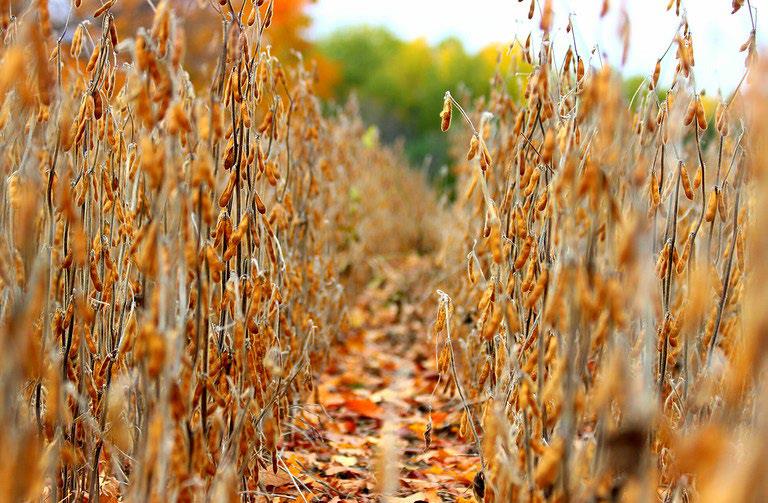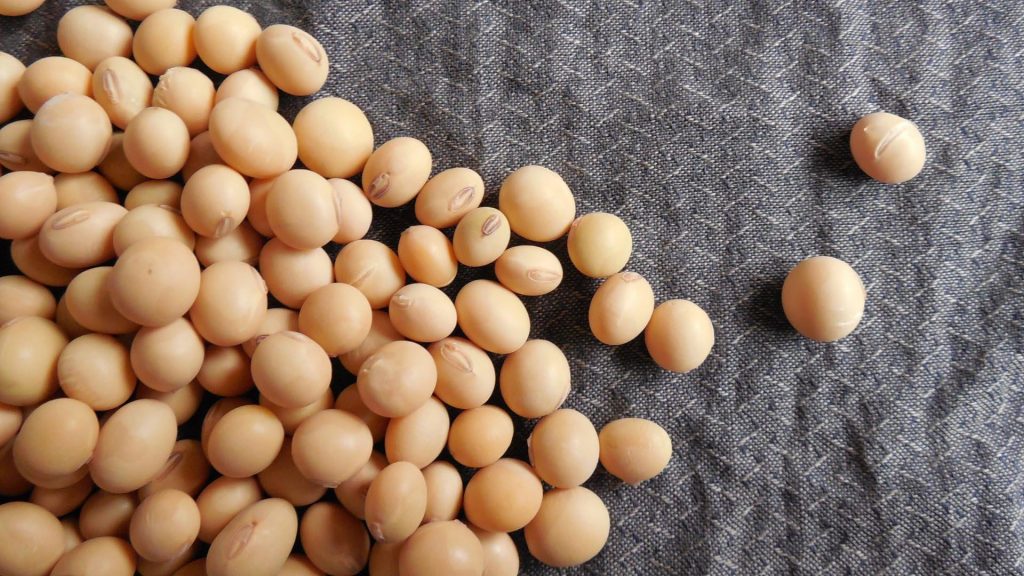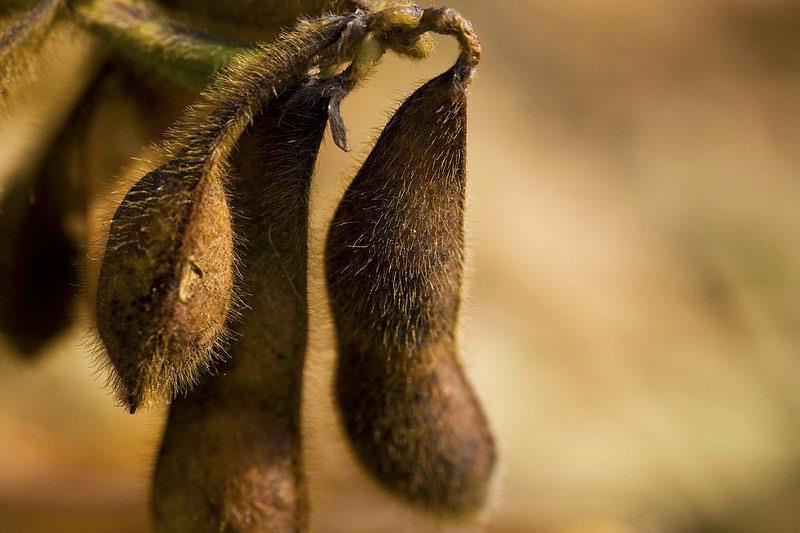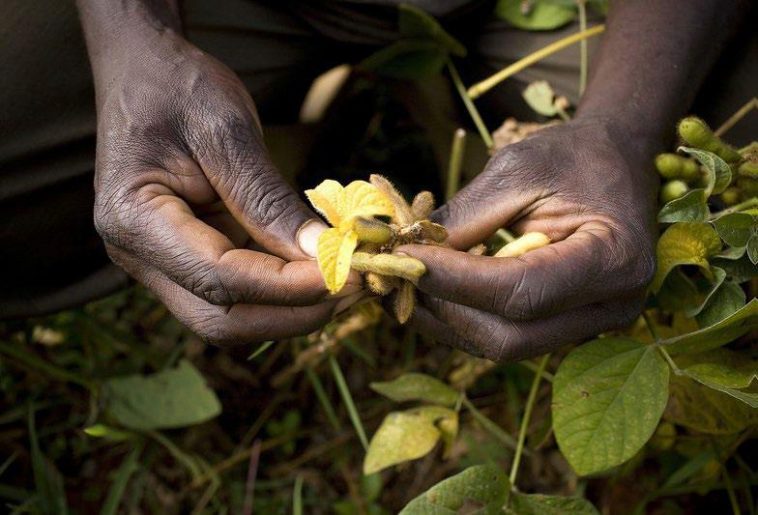Soya beans are healthful and rich in protein, giving them numerous nutritional uses.
People can eat them, drink them in milk alternatives, and take them in the form of supplements. Soya beans are a high protein plant food that people can prepare and eat in a variety of ways. They belong to the pea family.
Scientific name: Glycine max
Other names: Greater bean, soybean, sojaboon, dinawa, dzinawa, amabonjisi
Background
Soya beans are indigenous to Manchuria, China. The crop is considered one of the five oldest cultivated crops and was utilised by the Chinese as a source of food before 2500 BC. However, it was only discovered by the Western world as a source of oil and protein in the 19th century. In the past 35 years, world production of soya beans increased to more than 100-million metric tonnes. Of this, 51% is produced in the US, 20% in Brazil, 10% in Argentina and 10% in China.
Climatic requirements
Temperature
Temperature plays an important role in determining the rate at which soya beans grow. Yields are adversely affected if the temperature rises above 30 ºC, while temperatures below 13 ºC for long periods during the flowering stage inhibit flower and seed formation. Although 25 ºC can be considered the overall optimum temperature for all growth stages, the response differs in various growth stages. At planting time, the soil temperature must preferably be in the region of 15 ºC to stimulate germination.

Rainfall
Rainfall of 500 to 900 mm is required beansfor better yields and seed quality, depending on growth conditions.
Excessive rainfall prior to and during flowering can result in luxuriant growth and increased lodging. Waterlogged conditions have a negative effect on the crop yield.
Soil requirements
Deep, well-drained, highly fertile soil with a fine but firm seedbed and a good water-holding capacity is needed for high soya bean yields. Soya beans are generally better adapted to heavier soils and better able to utilise water at lower soil depths than most other crops, including maize.
Soya beans are better adapted to moist soils with a lower pH than other legume crops, but a pH lower than 5,2 impedes nitrogen fixation; optimum pH ranges from 6 and 6,5. Compacted soils should be avoided because the hypocotyl of the soya bean breaks easily during emergence if under pressure.

Cultivars
Seed companies offer many registered cultivars, ; and, research on cultivar improvement still continues. Approximately 80% of Southern Africa’s soya beans are GMO cultivars. The cultivars may change annually due to ongoing research. Therefore, farmers are advised to consider the latest registered cultivars in their own country before planting.
Cultivation practices
Soil preparation
Soil preparation for soya beans must be done thoroughly to ensure a deep, loose seedbed. However, unnecessary tillage should be avoided. Apart from being costly in terms of labour and money, every time soil is loosened, there will be a loss of moisture and soil structure. Conservation tillage practices are highly recommended. Large clods, furrows or ridges must be avoided to ease the planting operation and to ensure a good plant stand.
Planting
Early to mid-November is the most appropriate planting date for optimum soya bean production. Seed should be planted at a depth of 3 to 5 cm, depending on the soil texture, and it should emerge within five to seven days after planting. The spacing between the rows can range from 40 to 90 cm and from 5 to 15 cm between the plants. The spacing can also be determined by the method of irrigation or water availability.
A population of 250 000 to 400 000 plants per hectare is recommended, depending on the yield potential of the area and its weather conditions. Good seed-to-soil contact must be ensured to enhance germination.
Irrigation
The method of irrigation will be determined by water availability, soil type, type of cultivar and the type of irrigation equipment available. The best methods used for soya bean irrigation are sprinkler or drip irrigation systems. Most soya beans are rain-fed grown, the main factor limiting irrigation is profitability. Soya beans are sensitive to a water shortage during the pod setting stage.
Fertilisation
It is important that the correct soil sampling methods should be used when submitting samples for laboratory analyses. The nutritional requirements of soya beans are moderate to high compared to grains. Soya beans consume more phosphorus, potassium, magnesium, and calcium than maize crops. Fertiliser can be broadcasted and ploughed into the root zone.
Weed control
Young seedlings are unable to compete with many fast-growing weeds, and their control at this stage is very important. Chemical control can be used, but it needs special attention because there can be a toxic interaction between herbicides or insecticides used in the previous season and those applied to the current crop. Wide spectrum soya bean herbicides are registered for preplant, pre-emergence and post-emergence application.
Pest and disease control
Soya beans are susceptible to various viral and fungal diseases caused by different pathogens. Insects that may cause damage to soya beans are cutworms at emergence, soya bean loopers, various worms and green stinkbug during pod development. Integrated pest and disease management mechanisms can be used to control the pests and diseases.
Harvesting time and method
Harvesting should commence when most of the leaves have been shed, and the moisture content of the seed falls below 15%, but while the stems are still pliable. When soya beans are ready for harvesting, 90% of the pods will turn brown and shatter easily, and kernels will not be dry enough to break yet. Soya beans are not suited to hand harvesting, stacking, or windrowing. The recommended harvesting method is to use a combine harvester fitted with either a soya bean or wheat table.
Importance and uses
Human consumption:
Soya bean seeds is one of the world’s most important sources of oil and protein. Unripe seeds are eaten as a vegetable, and dried seeds are eaten whole, split, or sprouted. Processed, they give soya milk, a valuable protein supplement in infant feeding, which also provides curds and cheese. Soya sauce, made from the mature fermented beans, and soya are ingredients in other sauces. Roasted seeds are used as a coffee substitute or can be used to make soya flour.

Industrial uses:
Oil is used industrially in the manufacturing of paints, linoleum, oilcloth, printing inks, soap, insecticides, and disinfectants. Lecithin phospholipids are obtained as a by-product of the oil industry and are used as a wetting and stabilising agent in the food, cosmetic, pharmaceutical, leather, paint, plastic, and detergent industries.
Soya bean meal is used in the manufacturing of synthetic fibre, adhesives, textile sizing; waterproofing, fire-fighting foam and for many other purposes. The straw can be used to make paper stiffer than that made from wheat straw.
Animal feed:
The largest consumer of protein-rich meal in Southern Africa is represented by the poultry industry, especially the broiler industry, which has a high demand for quality protein. Soya meal is a very rich protein feed for livestock, and there is an increasing demand for it. The vegetative portions of plants are used for silage, hay, grazing or fodder, or may be ploughed back into the soil as a green fertilisation.
The information provided in this article is credited to the South African Department of Agriculture, Forestry and Fisheries. For more information, visit their website at www.daff.gov.za, contact them on +27(0)12-319-6072 or send an e-mail to DPP@nda.agric.za.









